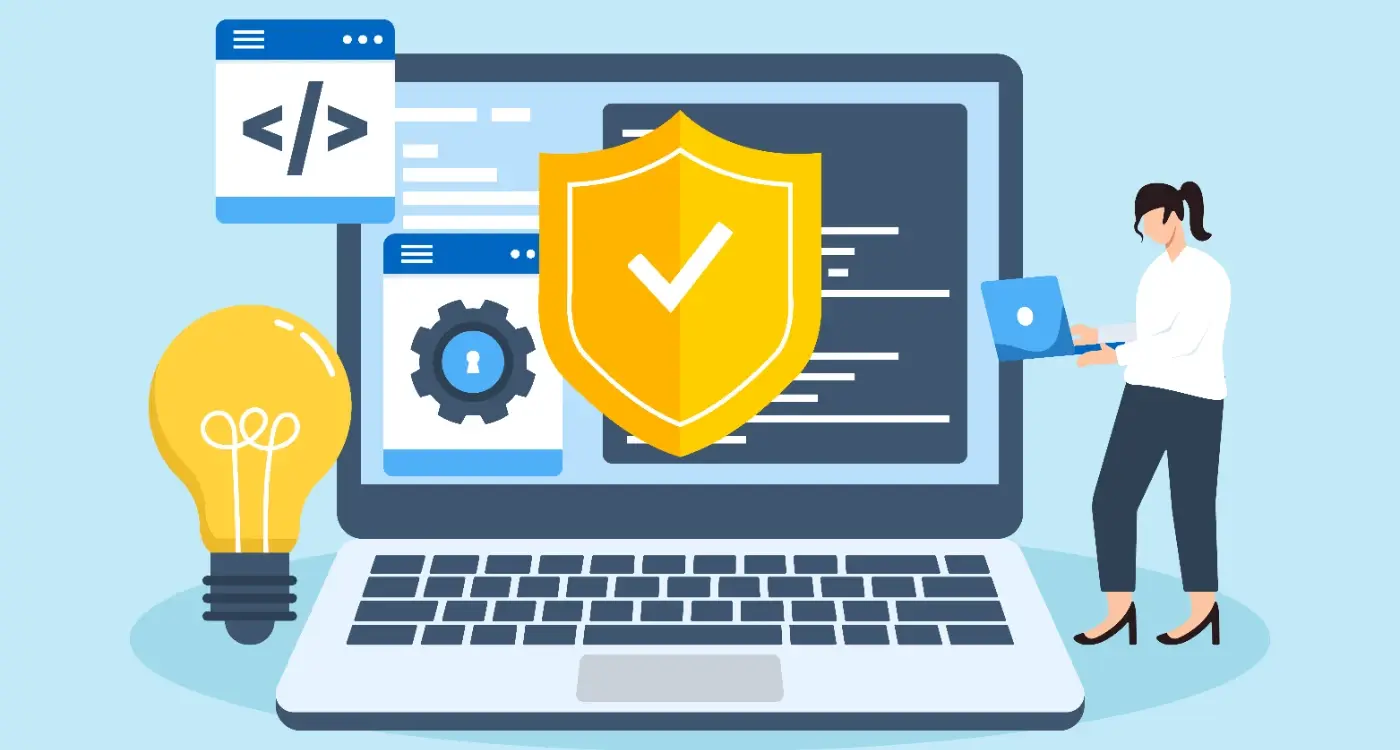How Can You Secure Your Cloud Development Environment?
Cloud development has become the backbone of modern software creation, but with this shift comes a whole new set of security challenges that many developers simply aren't prepared for. I've been working in the mobile app development space for years now, and I can tell you that the number of security breaches I've seen could fill a book—most of them completely avoidable if proper cloud development security measures had been in place from the start.
The thing is, when you're building apps in the cloud, you're not just responsible for your code anymore. You're dealing with data that lives across multiple servers, authentication systems that span different platforms, and network connections that travel through various secure cloud platforms. It's a bit like building a house where the foundations, walls, and roof are all managed by different companies—you need to make sure they all work together safely.
Security isn't something you bolt on at the end; it needs to be woven into every decision you make about your development environment from day one.
What makes cloud security particularly tricky is that traditional security approaches often don't translate well to cloud environments. The old method of building a fortress around your servers doesn't work when your development environment is distributed across multiple data centres and accessible from anywhere in the world. This guide will walk you through the practical steps you need to take to keep your cloud development projects secure without slowing down your team or breaking your budget.
Understanding Cloud Development Security Basics
When you're developing mobile apps in the cloud, security isn't just something you add at the end—it's the foundation everything else sits on. I've seen too many projects where teams treat security as an afterthought, and trust me, that never ends well. The cloud offers incredible flexibility and power for app development, but it also opens up new ways for things to go wrong if you don't understand the basics.
Think of cloud security like locking your house. You wouldn't just lock the front door and ignore all the windows, would you? Cloud environments work the same way—they have multiple entry points that all need protection. Your data, your code, and your users' information are all stored somewhere that isn't physically in your office, which means you need to be extra careful about who can access what and when.
The Core Elements You Need to Know
Cloud security revolves around several key areas that work together. Each one is important, but they're much stronger when they all work as a team:
- Identity and access management—controlling who gets in and what they can do
- Data encryption—scrambling your information so only authorised people can read it
- Network security—protecting the pathways your data travels through
- Regular monitoring—keeping an eye on what's happening in your environment
- Secure coding practices—building your app with security built right in
The good news? You don't need to become a security expert overnight. Start with understanding these basics, and you'll be well on your way to creating a secure environment for your mobile app development. Most cloud providers offer built-in security tools—you just need to know how to use them properly.
Common Security Threats in Cloud Environments
When you move your development work to the cloud, you're basically putting your digital assets in someone else's computer—and that opens up a whole new world of security challenges. The good news is that most cloud security threats follow predictable patterns, which means we can prepare for them.
Data breaches top the list of concerns for most developers, and rightfully so. These happen when unauthorised people gain access to your sensitive information—whether that's user data, source code, or business secrets. Mobile app security vulnerabilities are particularly concerning when weak passwords and poor access controls are usually the culprits here. Then there's the insider threat, which sounds dramatic but simply means someone with legitimate access misuses their privileges.
Account-Based Vulnerabilities
Account hijacking represents another major risk in cloud development security. Attackers target developer accounts through phishing emails or by exploiting reused passwords from other breaches. Once they're in, they can access your entire development environment and potentially push malicious code.
Enable two-factor authentication on all your cloud accounts—it's the single most effective defence against account compromise.
Infrastructure and Configuration Risks
Misconfigured cloud services cause more security incidents than you might expect. Default settings often prioritise ease of use over security, leaving databases publicly accessible or storage buckets wide open. Insecure APIs also present significant risks, particularly when they lack proper authentication or encrypt data inadequately.
- Unsecured databases and storage containers
- Weak API authentication and rate limiting
- Overly permissive access controls
- Unpatched software and dependencies
- Inadequate network segmentation
The shared responsibility model means you're accountable for securing your applications and data, even when using secure cloud platforms. Understanding these common threats helps you build stronger defences and keeps your development environment protected.
Setting Up Secure Authentication and Access Controls
Getting your authentication right is probably one of the most important things you'll do when securing your cloud development environment. I've seen too many projects get compromised because someone thought a simple password would be enough—spoiler alert: it isn't.
Multi-factor authentication (MFA) should be your first port of call. This means users need two or more things to prove who they are: something they know (like a password), something they have (like their phone), or something they are (like a fingerprint). Most cloud providers make this pretty straightforward to set up, and the extra few seconds it takes to log in could save you months of headache later.
Role-Based Access Control
Not everyone on your team needs access to everything—that's where role-based access control comes in handy. Think of it like giving out different keys to different people. Your junior developer doesn't need the same level of access as your DevOps engineer, and your designer definitely doesn't need database admin rights.
Start with the principle of least privilege: give people the minimum access they need to do their job, nothing more. You can always add permissions later if needed, but taking them away after someone's got used to having them? That's a conversation nobody enjoys.
Regular Access Reviews
People leave, roles change, and projects end—but their access often stays the same. Set up regular reviews (monthly or quarterly works well) to check who has access to what. Remove accounts for people who've left and adjust permissions for those whose roles have changed. It's boring work, but it's the kind of boring that keeps you secure.
Encrypting Your Data and Communications
When I'm working on cloud development security, encryption isn't something I treat as optional—it's absolutely fundamental. Think of encryption as a way of scrambling your data so that even if someone gets hold of it, they can't read what it actually says. Your development environment contains some pretty sensitive stuff: source code, database credentials, API keys, and user data that could cause serious problems if it falls into the wrong hands.
The good news is that most secure cloud platforms make encryption relatively straightforward to implement. You've got two main types to worry about: encryption at rest and encryption in transit. At rest means your data is encrypted when it's stored on servers, whilst in transit means it's protected when it's moving between different systems—like when you're pushing code or accessing databases.
Setting Up Encryption in Your Development Environment
Start with your communications first. Make sure you're using HTTPS for all web traffic and SSL/TLS certificates for your applications. Most cloud providers offer these as standard features, but you need to enable them properly. For your stored data, use AES-256 encryption whenever possible—it's the industry standard and provides excellent protection without slowing things down too much.
The weakest link in any security chain is often the human element, not the technology itself
Managing Encryption Keys Properly
Here's where many developers trip up: key management. Your encryption is only as strong as how well you protect the keys that unlock it. Never hardcode encryption keys into your source code or store them in plain text files. Use your cloud platform's key management services instead—they're designed specifically for this job and rotate keys automatically to maintain cloud development security standards.
Monitoring and Logging Your Cloud Activities
When you're working with cloud development environments, you need to know what's happening at all times—think of it like having security cameras in your house. Every click, every login attempt, every file change needs to be recorded and watched. Without proper monitoring and logging, you're flying blind and won't spot trouble until it's too late.
Setting Up Activity Logs
Most cloud platforms give you logging tools straight out of the box, but they're often switched off by default. You'll want to turn on logs for user access, file changes, system events, and network traffic. Don't just collect everything though—that creates massive files that are impossible to search through. Focus on the activities that matter most to your security.
The key is setting up alerts for unusual behaviour. If someone logs in from a country where your team doesn't work, you want to know immediately. Same goes for large file downloads, failed login attempts, or access to sensitive areas outside normal working hours.
Reviewing and Acting on Logs
Here's where many teams fall down—they collect all this data but never actually look at it. Set aside time each week to review your logs and look for patterns. Are there repeated failed logins? Unusual data transfers? Access attempts from unknown IP addresses?
Remember to keep your logs for long enough to be useful—at least 90 days, but ideally longer. You might need to investigate something that happened months ago, and having those records can make all the difference between catching a security breach and missing it completely.
Managing Code Security and Version Control
Your code is the heart of your mobile app—and protecting it should be your top priority when working in cloud development environments. After years of building apps for clients big and small, I've seen what happens when developers cut corners on code security. It's not pretty, and it's definitely not cheap to fix later.
Version control systems like Git are your best friend here, but only if you use them properly. Never commit sensitive information like API keys, passwords, or database credentials directly into your repository. I can't tell you how many times I've seen developers accidentally push secret keys to public repositories. Use environment variables or dedicated secret management services instead—your future self will thank you.
Setting Up Secure Repositories
When configuring your cloud-based repositories, enable two-factor authentication and restrict access using role-based permissions. Not everyone on your team needs admin access; give people the minimum permissions they need to do their job. Set up branch protection rules that require code reviews before merging—this catches security issues before they make it into production.
Always use .gitignore files to exclude sensitive configuration files, build artifacts, and local environment settings from your version control system.
Code Scanning and Security Checks
Modern cloud platforms offer automated security scanning that checks your code for vulnerabilities as you commit changes. Enable these features—they're like having a security expert reviewing your code 24/7. Set up pre-commit hooks that run security checks locally before code even reaches your repository. This catches problems early when they're easier and cheaper to fix.
Regular security audits of your dependencies are equally important. Outdated libraries often contain known vulnerabilities that attackers love to exploit.
Network Security and Firewall Configuration
Network security is like having a really good bouncer at your cloud development party—you want to let the right people in whilst keeping the troublemakers out. When you're working in the cloud, your applications and data are constantly chatting with other services, users, and systems through the internet. Without proper network security, you're basically leaving your front door wide open.
Think of firewalls as your first line of defence. They sit between your cloud environment and the outside world, checking every piece of traffic that wants to come in or go out. Most cloud providers give you built-in firewall tools, but you need to configure them properly. The golden rule? Start with everything blocked, then only open what you actually need.
Setting Up Your Firewall Rules
Creating firewall rules isn't rocket science, but it does require some thinking. You'll want to control traffic based on several factors:
- Source and destination IP addresses
- Port numbers (like 80 for web traffic or 443 for secure web traffic)
- Protocol types (TCP, UDP, ICMP)
- Time-based restrictions
- User or application identity
Network Segmentation Strategy
Don't put all your eggs in one basket—segment your network into different zones. Your database servers shouldn't be in the same network segment as your public-facing web servers. This way, if someone breaks into your web server, they can't automatically access your sensitive data. It's about creating layers of protection that make an attacker's job much harder.
Regular monitoring is key too. Set up alerts for unusual traffic patterns and review your firewall logs regularly. Most cloud platforms offer detailed logging that shows you exactly what's being blocked and allowed—use this information to fine-tune your rules over time.
Backup and Disaster Recovery Planning
I'll be honest with you—backup and disaster recovery planning isn't the most exciting part of cloud development security, but it's one of those things that'll save your bacon when everything goes sideways. And trust me, things do go sideways more often than we'd like to admit.
Your backup strategy needs to cover three main areas: your code, your data, and your development environment configurations. Code repositories should be backed up regularly—most developers use Git with multiple remote repositories, which gives you some protection already. But don't stop there; your databases, user files, and application configurations need regular snapshots too.
Testing Your Recovery Process
Here's where most teams fall down: they create backups but never test whether they can actually restore from them. You need to regularly simulate disaster scenarios and practice your recovery procedures. What happens if your primary cloud region goes down? Can you spin up your development environment in another location?
The best backup system in the world is useless if you can't restore from it when you need to
Automated Backup Solutions
Manual backups are better than no backups, but automated solutions are your best bet for consistent protection. Most secure cloud platforms offer automated backup services that can snapshot your entire development environment on a schedule. Set up multiple backup frequencies—daily for active development work, weekly for stable builds, and monthly for major milestones. Keep backups in different geographical locations and test your restoration process monthly. Automating your app development workflows can significantly improve your backup consistency and recovery capabilities.
Conclusion
Securing your cloud development environment isn't a one-time job—it's an ongoing commitment that requires attention and regular updates. I've seen too many development teams think they can set everything up once and forget about it, only to face serious problems later. The truth is, cloud security needs constant care and monitoring.
Throughout this guide, we've covered the main areas you need to focus on: authentication controls, data encryption, activity monitoring, code security, network protection, and backup planning. Each of these elements works together to create a strong security foundation. Understanding essential business app security measures is crucial whether you're building consumer apps or enterprise solutions. Miss one piece and you could leave your entire system vulnerable to attack.
What I find most important is starting with the basics and building up your security layer by layer. You don't need to implement everything at once—that often leads to mistakes. Begin with strong authentication and access controls, then add encryption for your sensitive data. Once those are solid, move on to monitoring and logging systems.
The mobile app development world moves fast, and security threats change just as quickly. New vulnerabilities appear regularly, and attackers find clever ways to exploit systems. That's why keeping your security measures up to date is so important. Regular security reviews, updating your tools, and training your team should become part of your normal routine.
Remember, good cloud security isn't just about protecting your code—it's about protecting your users, your reputation, and your business. The time you invest in securing your development environment properly will save you from much bigger problems down the road.
Share this
Subscribe To Our Learning Centre
You May Also Like
These Related Guides

What Do You Need to Know About Building GDPR-Compliant Healthcare Apps?

What Security Standards Should Your Development Platform Meet?



